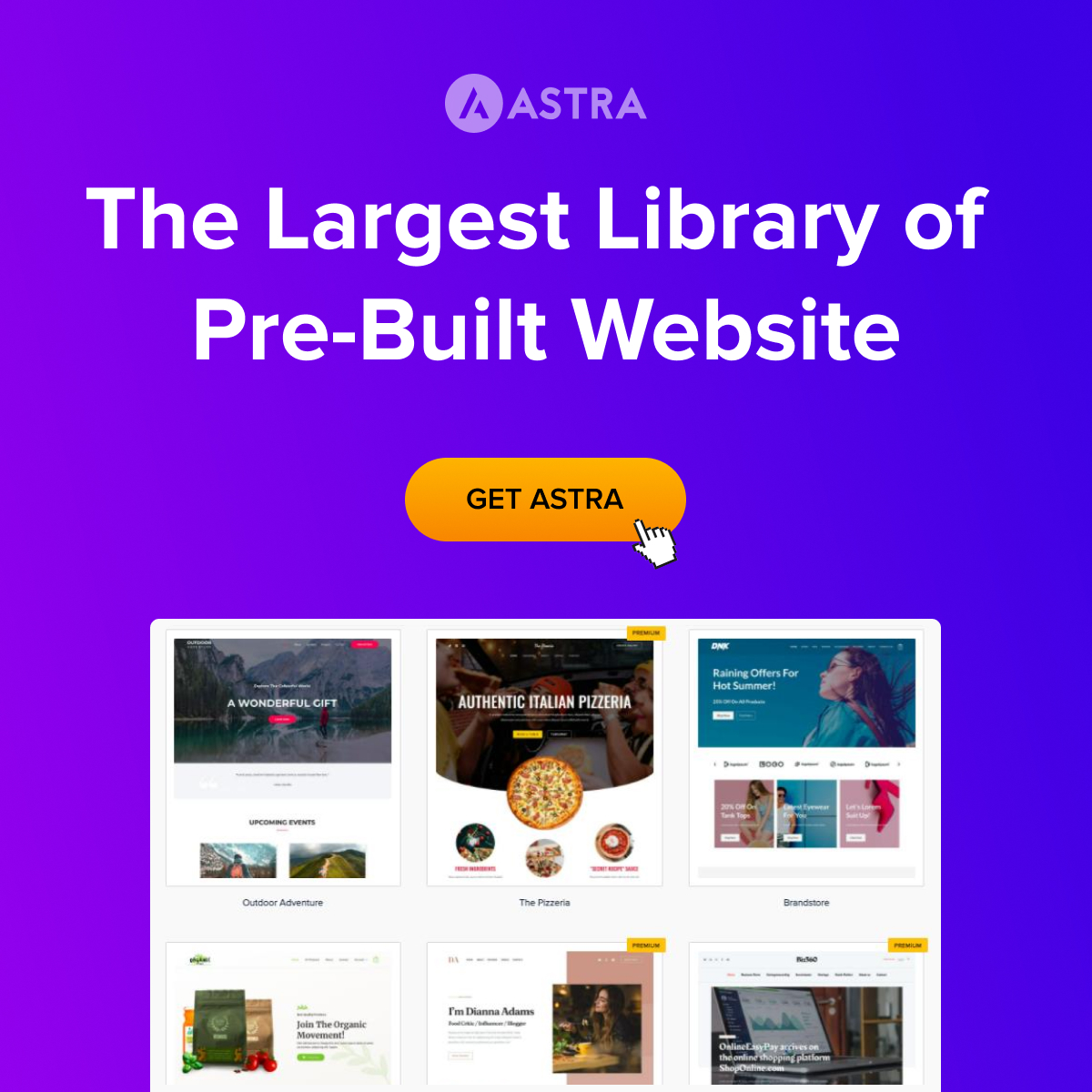In today’s digital landscape, user experience (UX) is the cornerstone of a successful website. While great design can attract visitors, it’s the usability that keeps them engaged and coming back. However, even the most visually appealing sites can suffer from common UX mistakes that drive potential users away. This blog post will delve into five critical UX errors that could be detrimental to your site’s effectiveness and user satisfaction.
First, we explore the issue of complex navigation which can confuse visitors and lead them to leave your site prematurely. Ensuring that your website is easy to navigate and intuitive is crucial for keeping users engaged. Additionally, with the rise of mobile browsing, ignoring the needs of mobile users is a grave mistake. A website that isn’t optimized for mobile devices is likely to frustrate a significant portion of your audience.
We will also cover the dangers of overwhelming your visitors with too much information at once, the impact of slow loading times, and the importance of making your website accessible to all users. By understanding these common pitfalls, you can take proactive steps to enhance your website’s UX and ensure it meets the needs of every visitor.
Poor Navigation Structure
A well-organized and intuitive navigation structure is a fundamental aspect of good website design, yet it’s one of the most common areas where websites falter. Poor navigation can create a frustrating experience for users, making it difficult for them to find the information they need. This often leads to higher bounce rates and lower overall satisfaction, which can directly impact the success of your site.
Key Elements of Effective Navigation
- Simplicity and Clarity: The navigation menu should be simple and straightforward. Users should not have to guess where each link will take them. Use clear, descriptive labels for each navigation item to ensure users understand their meaning at a glance.
- Consistency: The navigation structure should be consistent throughout the website. This includes maintaining the same navigation layout across all pages. A consistent navigation structure helps users learn how to navigate your site more quickly and easily.
- Accessibility: Navigation should be accessible to everyone, including users with disabilities. This means using proper HTML structure, such as
<nav>elements, and ensuring that all navigation links are accessible via keyboard and screen readers. - Hierarchy: Organize navigation items according to the importance of the information they link to. Primary services or products should be prominently placed. Consider using drop-down menus or mega menus for websites with extensive content to keep related items grouped together and easy to access.
Common Mistakes to Avoid
- Overloading the Navigation Menu: Adding too many items to the main navigation can overwhelm users. It’s important to balance between providing enough links to be useful and keeping the menu manageable. Utilize sub-menus and footer links for less critical content.
- Using Vague or Jargon-Filled Labels: Navigation labels should be instantly understandable to the average visitor. Avoid using internal jargon or overly creative terms that might confuse users.
- Neglecting Mobile Users: Ensure that your navigation is fully responsive and easy to use on mobile devices. Hamburger menus are a popular choice for mobile sites because they provide a clean and efficient way to present navigation links without taking up too much screen space.
Improving your website’s navigation is not just about avoiding user frustration; it’s about creating a seamless experience that encourages visitors to explore further and engage more deeply with your content. By focusing on these key aspects of navigation design, you can ensure that your site is user-friendly and effective in meeting your business goals.
Ignoring Mobile Users
In an era where mobile devices dominate internet access, designing a website without considering mobile users can significantly impair its effectiveness. Mobile optimization is no longer just an option—it’s a necessity. Ignoring mobile users not only leads to a poor user experience but also affects your site’s search engine rankings, as search engines like Google prioritize mobile-friendly websites.
Importance of Mobile Optimization
- Increased Traffic: Mobile devices account for approximately half of the web traffic globally. Providing a good user experience on mobile is crucial for reaching this extensive audience effectively.
- Enhanced User Engagement: Mobile users expect fast, accessible, and efficient interaction with websites. A mobile-optimized site with touch-friendly navigation and readable content without the need to zoom can significantly enhance user engagement and satisfaction.
- SEO Benefits: Google’s mobile-first indexing bases ranking and indexing primarily on the mobile version of a site. A mobile-friendly website is more likely to attain better rankings in search results, driving more organic traffic.
Strategies for Mobile Optimization
- Responsive Design: Implementing a responsive web design ensures that your website adjusts beautifully to the size of any device’s screen. This adaptability improves the user experience across all platforms and devices.
- Speed Optimization: Mobile users often access the internet via cellular data, which might not be as fast as a broadband connection. Optimizing your website’s load time through image compression, minimizing code, and leveraging browser caching can significantly improve performance.
- Simplified Navigation: On smaller screens, complex menus can be challenging to navigate. Simplifying your site’s navigation and employing a hamburger menu can make it easier for mobile users to browse your site.
- Accessible Design: Touchscreen readiness is crucial for mobile websites. Ensure that all interactive elements like buttons and links are easy to tap and that there’s enough space to prevent the frustration of mis-taps.
- Testing and Feedback: Regular testing on various devices and collecting feedback from mobile users can help identify and address specific issues that could impact the mobile experience.
Ignoring mobile users can lead to a decline in user engagement, lower conversion rates, and potentially harm your brand reputation. By embracing mobile optimization, you ensure that all visitors, regardless of the device they are using, have a positive and seamless experience on your website. This strategy not only supports current user engagement but also prepares your platform for future technological advancements and trends.
Overloading with Information
In the digital age, where attention is the new currency, bombarding users with too much information can be counterproductive. A website cluttered with excessive text, images, and multimedia content can overwhelm visitors, making it difficult for them to find what they need or make decisions. This issue, often referred to as information overload, can significantly detract from the user experience and reduce the effectiveness of your website.
Balancing Content and Clarity
- Prioritize Key Information: Identify the most important information that your users need to know and make it easily accessible. Use a content hierarchy to structure information logically, ensuring that primary messages are prominent and secondary details are available but not overwhelming.
- Use White Space: White space, or negative space, isn’t just empty space—it’s a powerful design element. Proper use of white space can help reduce cognitive load by breaking up content into manageable chunks and focusing the user’s attention on what matters most.
- Simplify Visual Elements: While visuals are crucial for engaging users, too many can distract and confuse. Opt for a clean and organized layout that uses images, videos, and graphics judiciously to support the content rather than compete with it.
Techniques to Avoid Information Overload
- Chunking Content: Break large blocks of information into smaller, digestible pieces. Use headings, lists, and short paragraphs to make the content easier to scan and understand.
- Progressive Disclosure: Present only the necessary information upfront, and allow users to access more detailed content as needed through interactive elements like “Read more” links or accordion panels. This approach keeps the interface clean while providing additional details on demand.
- Consistent Design Language: Use consistent icons, colors, and layouts to convey information. A uniform design language helps users quickly learn how your site works, making it easier for them to find information.
- Interactive Elements: Implement tools such as search bars, filters, and sorting options to help users navigate large amounts of information. These tools empower users to find what they are looking for without having to wade through irrelevant content.
Overloading users with information can lead to decision fatigue, where the more choices they are given, the less likely they are to make any choice at all. By carefully considering how information is presented, you can enhance user engagement, improve the usability of your site, and drive better outcomes, whether that’s increased sales, longer visit times, or more frequent returns to your site.
Slow Load Times
Slow loading times are one of the most critical issues that can affect a website’s user experience and its overall effectiveness. In an era of instant gratification, users expect web pages to load quickly and seamlessly. A delay of just a few seconds can significantly increase bounce rates, decrease user satisfaction, and ultimately impact conversions and revenue. Optimizing your website’s load time is essential for providing a smooth user experience and improving your site’s performance.
Impact of Slow Loading Times
- User Experience: Slow websites create a frustrating experience for users. Delays can deter users from continuing to interact with your site, leading to higher abandonment rates.
- SEO Rankings: Search engines like Google consider page speed as a ranking factor. Websites that load faster tend to rank higher, which can lead to increased organic traffic.
- Conversion Rates: Studies have shown that faster websites generally achieve better conversion rates. Users are more likely to complete purchases and return to a site that offers a quick and easy browsing experience.
Strategies for Improving Load Times
- Optimize Images: Large images are one of the main culprits behind slow websites. Optimize images by compressing them and using appropriate file formats like JPEG for photographs and PNG for graphics with fewer than 16 colors.
- Minimize HTTP Requests: Each piece of your web page (like scripts, images, and style sheets) requires an HTTP request to load. Reduce these requests by simplifying design elements, merging CSS and JavaScript files, and using CSS instead of images whenever possible.
- Enable Caching: Caching allows return visitors to load your website faster since their browser can store parts of your site locally. Implement browser caching policies to keep your site speedy for repeat visitors.
- Use a Content Delivery Network (CDN): A CDN stores copies of your site in multiple, geographically diverse data centers so that users can load your site from the nearest server, reducing load time significantly.
- Evaluate and Optimize Code: Efficient, well-written code can dramatically improve page load times. Remove unnecessary characters, comments, and spaces from HTML, CSS, and JavaScript. Use tools like Google’s PageSpeed Insights to identify specific code optimizations.
- Prioritize Loading: Implement techniques like lazy loading for images and prioritizing visible content to load critical assets first. This makes the initial page load appear faster to the user, improving the perceived performance of your site.
By addressing slow load times, you not only enhance the user experience but also bolster your site’s SEO performance and potentially increase conversion rates. Regularly monitoring and optimizing the performance of your website is vital to staying competitive in the fast-paced digital landscape.
Inadequate Accessibility
Accessibility in web design ensures that websites are usable by people of all abilities and disabilities. When a website is not accessible, it not only excludes a significant portion of the population but also fails to comply with legal standards such as the Americans with Disabilities Act (ADA) in the U.S. or the Web Content Accessibility Guidelines (WCAG) internationally. Improving accessibility not only broadens your audience but also enhances the overall usability of your site for all users.
The Importance of Web Accessibility
- Inclusivity: Web accessibility ensures that everyone, including people with disabilities such as visual impairments, hearing loss, and motor difficulties, can interact with your site. This inclusivity strengthens the social values of your business and reaches a wider audience.
- Legal Compliance: Many regions require that public and certain private websites meet specific accessibility standards. Non-compliance can lead to legal repercussions, including fines and lawsuits.
- Improved SEO: Many of the practices that enhance accessibility, such as using alt text for images and ensuring a proper heading structure, also improve SEO. Search engines can more effectively index an accessible website.
Strategies for Enhancing Website Accessibility
- Use Semantic HTML: Proper use of HTML5 elements like
<header>,<footer>,<nav>, and<article>helps screen readers and assistive technologies better understand the structure of your page. - Ensure Keyboard Navigability: Make sure that all interactive elements are accessible through keyboard shortcuts. This feature is crucial for users who cannot use a mouse or touch screen effectively.
- Alt Text for Images: Provide descriptive alt text for all images. This step is vital for users who rely on screen readers to understand visual content.
- Contrast and Colors: Ensure sufficient contrast between your text and background colors to make content readable for everyone, including users with visual impairments. Avoid using color as the only means of conveying information.
- Accessible Forms: Label form elements properly and provide instructions that make forms usable for everyone. Ensure error messages are clear and help users correct mistakes.
- Use ARIA Roles and Properties: Accessible Rich Internet Applications (ARIA) roles and properties help enhance the accessibility of dynamic content and complex user interface controls developed with Ajax, HTML, JavaScript, and related technologies.
- Regular Testing: Regularly test your website’s accessibility using both automated tools and human testers. Real user feedback, particularly from people with disabilities, is invaluable in identifying and addressing accessibility issues not caught by automated tests.
Inadequate accessibility not only restricts access to your website’s content but also impacts your brand’s reputation and legal standing. By committing to accessible web design, you ensure that your site is welcoming and usable for all users, thereby enhancing user experience, expanding your potential market, and promoting inclusivity.
Conclusion
In conclusion, overlooking common UX mistakes such as poor navigation structure, ignoring mobile users, overloading with information, slow load times, and inadequate accessibility can significantly hinder your website’s effectiveness and alienate potential users. By addressing these issues, you not only improve the usability and accessibility of your site but also enhance the overall user experience, which is crucial for maintaining engagement and achieving higher conversion rates.
Each of these common UX pitfalls has straightforward solutions that can dramatically improve the way users interact with your website. Implementing best practices for navigation, optimizing for mobile devices, managing content load, speeding up your site, and ensuring it is accessible to all are essential steps in creating a successful online presence. By focusing on these aspects, you can create a website that not only looks great but is also efficient, inclusive, and optimized for user satisfaction and retention. This proactive approach to UX design will set your website apart in the competitive digital landscape, driving growth and fostering positive user interactions.














